Cost to Import Light Gauge Steel Prefab from China

China is a top leader in the world’s steel production, contributing over 50%. This makes it a major player in the construction materials market globally. Its 1.39 billion people and a boom in manufacturing are a big deal for anyone in the building business. Those seeking to import top-notch, budget-friendly prefabricated steel items from China need to know the cost factors. This knowledge is key to keeping your building project within budget.
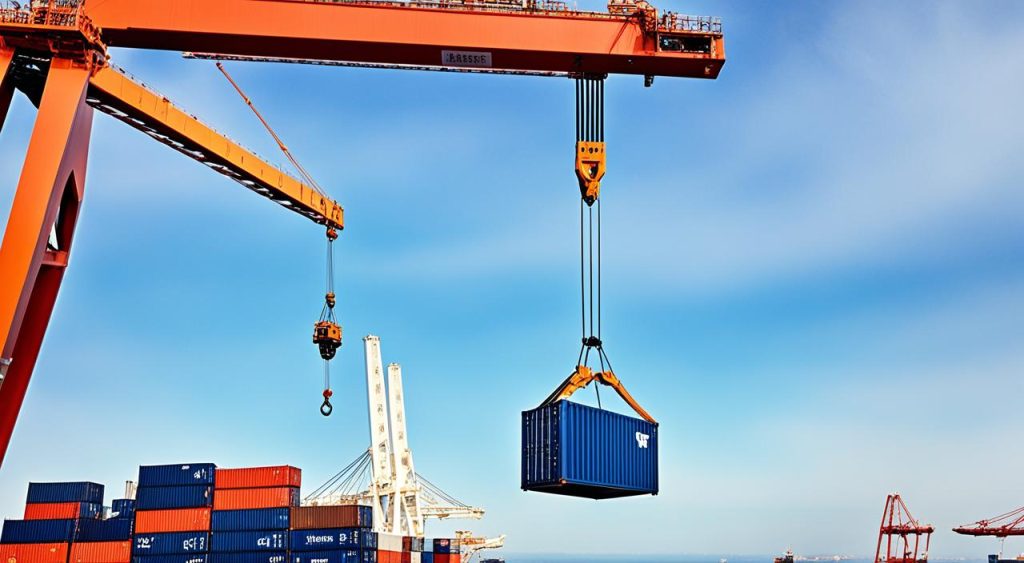
Key Takeaways
- China’s vast labor force and economies of scale contribute to lower manufacturing costs for prefab steel products.
- Shipping, import duties, and taxes can significantly impact the total cost of importing steel prefab from China.
- Careful planning and research are essential to accurately estimate the expenses associated with importing steel prefab.
- Leveraging duty calculators and working with experienced freight forwarders can help streamline the import process.
- Evaluating the quality and reliability of Chinese suppliers is crucial to ensure a successful and cost-effective import experience.
Understanding the Costs of Importing Steel Prefab
Importing steel prefab from China involves knowing the costs well. It helps in planning your project’s budget. The main costs to look at are shipping and import duties and taxes.
Shipping Costs
Shipping prices change a lot based on where the cargo is going. For instance, sending a container from Shanghai to San Francisco costs about $1,900. To Sydney, it is roughly $1,100, but to Vancouver, it can reach $3,100.
Import Duties and Taxes
Every country has its own import duties and taxes. You can use an online calculator to figure out these costs. In the US (California), there’s no duty, just a $500 processing fee. Importing to Canada (British Columbia) means a 12% tax on the project’s value. Yet, in Australia, expect to pay a 5% duty and a 10% GST on a total worth of $200,000.
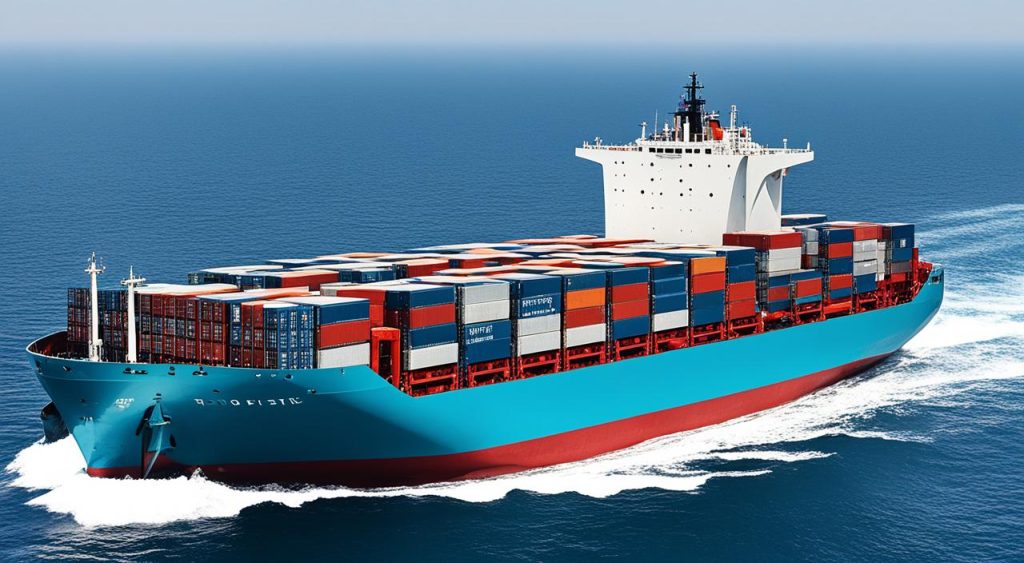
Knowing the shipping and import costs is key to your project’s success. With the right information, your steel prefab project can be more cost-efficient.
Determining Project Requirements
Before you start importing light gauge steel prefab materials from China, understand what your project needs. This means knowing how big your building is and figuring out how many shipping containers you’ll need.
Estimating Square Footage
First, figure out the square footage of your building project. This tells you how big your construction is and the materials it needs. For instance, a 340 m² house would need about 170 m² of packing space. That’s around six 40′ HQ containers for all the materials you’ll use.
Calculating Container Needs
Calculating the right number of containers is very important for your project’s budget and planning. Each 40′ HQ container can hold 28 m² of materials. So, divide the total materials’ volume by this space to get the number of containers you need. This is key for managing your project’s supply chain and ensuring quality.
| Project Size | Packing Space Needed | Containers Required |
|---|---|---|
| 340 m² | 170 m² | 6 x 40′ HQ |
By planning your project well, you can make your supply chain and quality assurance better. This leads to a successful and efficient import of light gauge steel prefab from China.
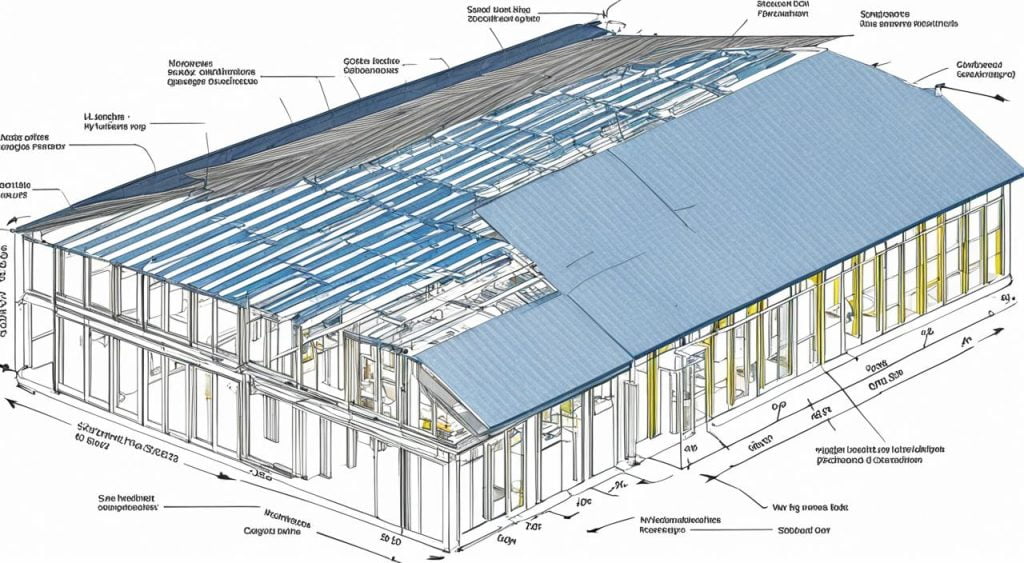
Obtaining Shipping Quotes
When importing light gauge steel prefab from China, it’s vital to find good shipping rates. You can check searates.com for the latest shipping information. This site offers a detailed look at your shipping options and costs.
Shipping prices change a lot, depending on the time of year and other factors. It’s smart to get quotes from different companies. This way, you can find the best costs for your project with a little effort.
Here are some things to keep in mind when getting shipping quotes:
- Freight shipping costs per kilogram or per container
- Transit times for different shipping modes (air express, air freight, sea freight)
- Any additional fees or surcharges that may apply
- Availability of space and capacity during peak shipping seasons
- Reputation and reliability of the shipping provider
| Shipping Method | Cost per Kilogram | Transit Time |
|---|---|---|
| Air Express | $7.54 to $9.54 | 1-5 days |
| Air Freight | $3.40 to $15.50 | 2-15 days |
| Sea Freight | $1,200 to $1,850 per container | 15-35+ days |
If you carefully look at your shipping needs and compare many quotes, you can pick the best option for you. This way, your logistics costs stay low and your freight shipping goes smoothly for your project.
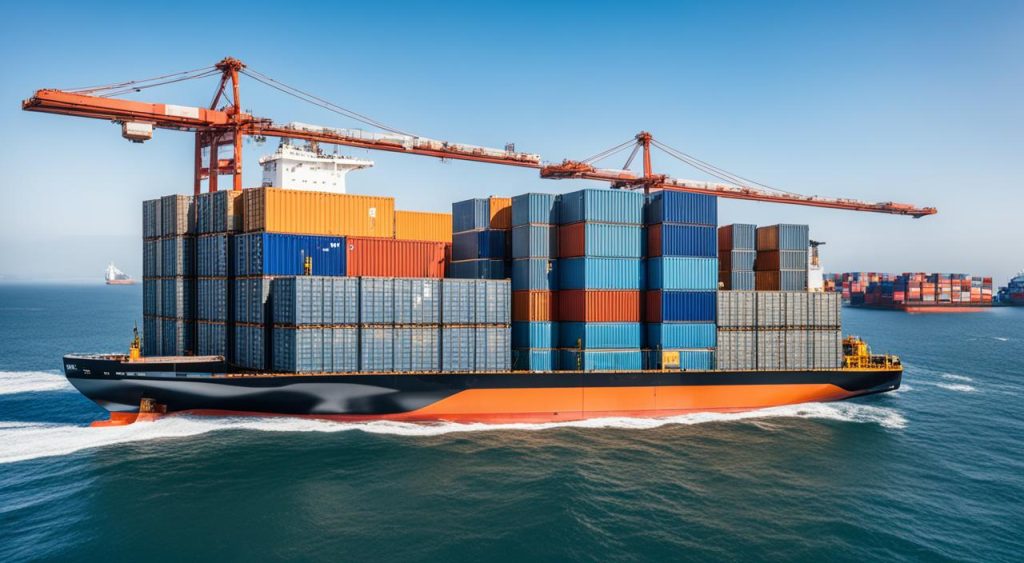
Using Duty Calculators
Importing light gauge steel prefab from China means you must understand customs duties and trade rules. Luckily, duty calculators online can guide you. They provide key info for handling import tariffs and duties.
Identifying HS Codes
To properly use a duty calculator, you first need to identify the Harmonized System (HS) code for your product. Light gauge steel prefab is often classified under HS code 730890. This category is for “iron or steel; structures and parts thereof.” By entering this code and your products’ value, you’ll receive import duty and tax estimates.
Calculating Import Duties
Online tools, like DutyCalculator.com, are great for finding import duties. Let’s say your steel prefab project ships to California. It might be duty-free with a $500 processing fee. Yet, in Canada, it could also be duty-free but facing a 12% tax. Challenges in Australia might include a 5% import duty and an extra 10% Goods and Services Tax (GST).
These duty calculators empower you to manage your budget and plans better. This ensures you don’t overlook crucial customs duties and trade rules. Understanding these costs is key to deciding if importing from China is cost-efficient compared to local options.
| Country | Import Duty | Additional Taxes |
|---|---|---|
| United States | Duty-free | $500 processing fee |
| Canada | Duty-free | 12% taxes |
| Australia | 5% import duty | 10% GST |

“Using online duty calculators can provide valuable insights into the customs duties and trade regulations you’ll need to navigate when importing light gauge steel prefab from China.”
Exploring Prefab Suppliers in China
China is a key place to look for light gauge steel prefab materials. It hosts many well-known manufacturers who offer top-notch products at good prices. These Chinese companies hold a strong place in the global prefab steel market. They offer a wide variety of solutions to construction experts all over the world.
Some top Chinese suppliers in this field include Qingdao Tailong Steel Structure Co., Ltd., Weifang Zontop Steel Structure Co., Ltd., and others. These firms are very experienced in making and exporting light gauge steel prefab goods. They are trusted partners for construction jobs that seek affordable, smart solutions.
| Chinese Prefab Suppliers | Product Offerings | Certifications and Accreditations |
|---|---|---|
| Qingdao Tailong Steel Structure Co., Ltd. | Light gauge steel framing, prefab buildings, steel roof trusses | ISO 9001, CE, CNAS, CSAA |
| Weifang Zontop Steel Structure Co., Ltd. | Prefab steel structures, steel warehouses, steel workshops | ISO 9001, ISO 14001, OHSAS 18001 |
| Guangzhou Xingang Steel Structure Housing Co., Ltd. | Prefab steel houses, steel frame buildings, steel roofing systems | CE, CCC, ISO 9001 |
| Foshan Yahouse Building Material Co., Ltd. | Prefab steel wall panels, steel roof tiles, steel beams | ISO 9001, CE, CNAS |
| Guangzhou Moneybox Steel Structure Engineering Co., Ltd. | Prefab steel structures, industrial sheds, steel storage buildings | ISO 9001, ISO 14001, OHSAS 18001 |
These manufacturers also offer extras like custom design and engineering help. They can make your construction work smoother, reduce costs, and make sure you get your steel materials on time.
When you’re looking at prefab suppliers in China, doing your homework is crucial. Check their background, and make sure to talk openly with them. This ensures they can meet the unique needs of your project. By choosing the right Chinese manufacturers, construction pros can enjoy the advantages of affordable and effective steel prefab solutions.

calculate-cost-importing-light-gauge-steel-prefab-china
Figuring out the cost of importing light gauge steel prefab from China is tricky. But, knowing the main elements can guide your decision. You should look at all the expenses to calculate-cost-importing-light-gauge-steel-prefab-china. This way, you’ll be ready with your project’s budget.
- Estimate the Square Footage and Container Needs: First, know how big your project is. This helps figure out how many containers are needed for the steel prefab from China. A 40-foot container usually fits 5,000 square feet of building space.
- Obtain Shipping Quotes: Get in touch with shipping companies for prices to move the steel prefab to your place. The cost depends on container numbers, the shipping path, and when you want it delivered.
- Calculate Import Duties and Taxes: Find the right HS code for your prefab. Then, use online tools to guess the import taxes and duties. These charges change with the product’s value and type.
- Factor in Additional Costs: Remember, you need to pay for local transport, quality checks, and maybe storage. Don’t miss these costs in your planning.
By looking at these factors, you can get a full idea of calculate-cost-importing-light-gauge-steel-prefab-china. This helps you make a wise choice about your project’s viability and budgeting.
| Cost Category | Estimated Range |
|---|---|
| Shipping Costs (per 40-foot container) | $3,000 – $6,000 |
| Import Duties and Taxes | 10% – 25% of product value |
| Transportation and Logistics | $1,000 – $3,000 |
| Quality Assurance and Inspections | $500 – $2,000 |
Keep in mind, these estimates can change based on your project needs, the shipping path, and market factors. Talking to experts and doing your homework can give you a better idea on the cost calculation for importing steel prefab from China.
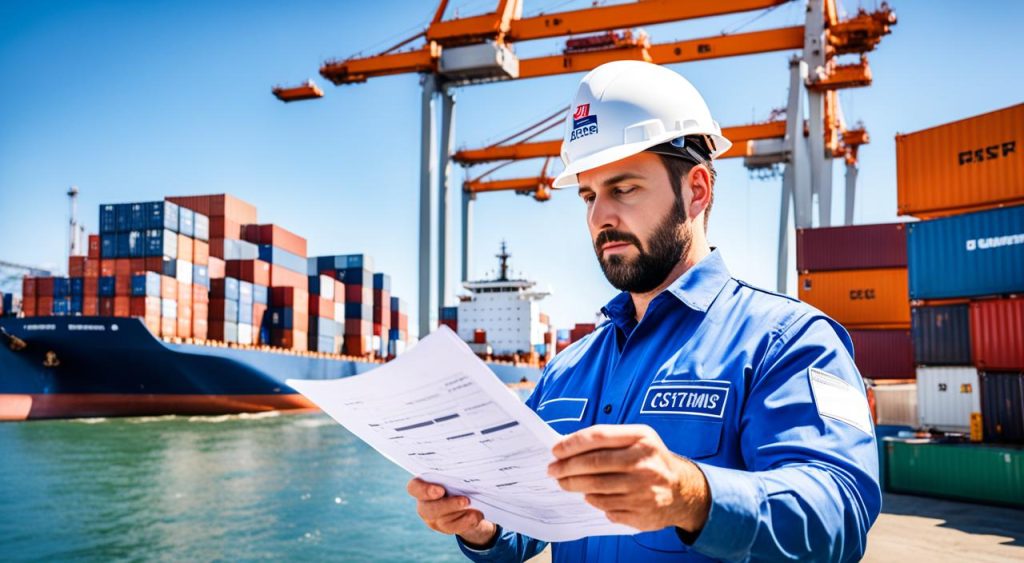
“The key to successful project planning is understanding and managing the costs involved. By carefully calculating the expenses associated with importing light gauge steel prefab from China, you can make informed decisions and ensure the long-term success of your construction project.”
Considering Additional Costs
Importing light gauge steel prefab from China involves more costs than just shipping and import fees. There are extra expenses like transportation and logistics in your country and quality checks. These can greatly affect your project’s total budget.
Transportation and Logistics
After the prefab materials reach the port, you must think about moving them to the site. This cost changes based on the distance, how they’re transported (like by truck or rail), and if they need special care. Making sure the materials are unloaded, stored, and delivered correctly is a vital part of the import process.
Quality Assurance and Inspections
Checking to make sure your prefab is high quality and safe requires some budgeting too. You might need to hire outside inspectors, do tests on-site, and confirm materials meet building standards. These steps can reduce the chance of future problems with the materials.
Thinking about these extra fees early helps you create a complete budget for the prefab import. It allows for better decision-making and lets you control your supply chain well. This means your construction project has a better chance of success through good supply chain management.
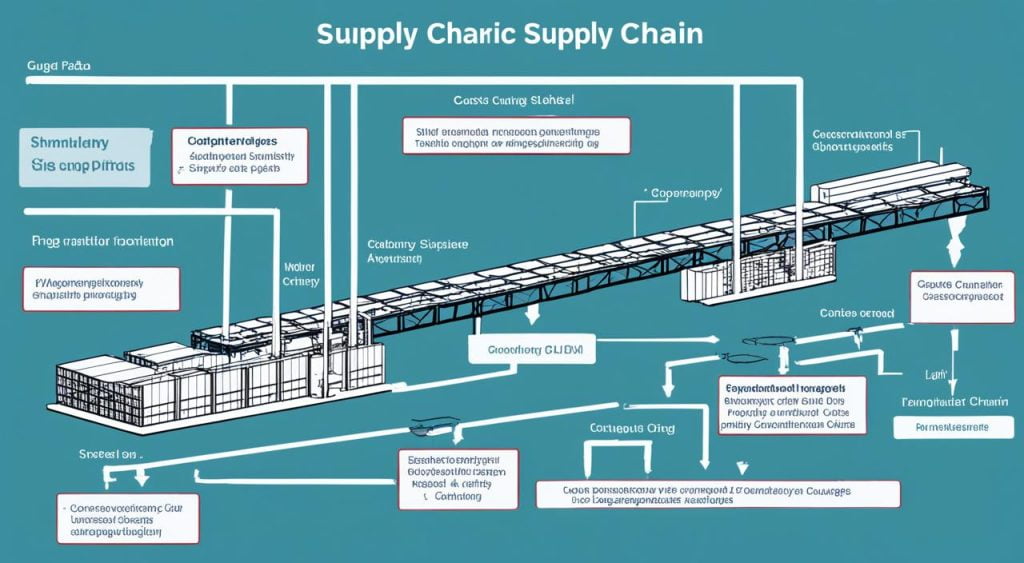
“Proper planning and budgeting for all aspects of the import process are crucial for the successful and cost-effective execution of a light gauge steel prefab project.”
Cost Comparison: Domestic vs. Imported Prefab
Comparing the cost of importing prefab from China to sourcing it locally is a key step. Importing can sometimes be cheaper due to lower material costs. However, it’s crucial to look at the full project costs for both options.
Market trends show that metal stud prices increased by 5% in November. Steel mills are charging more as they start up again after maintenance. This price jump is affecting leading manufacturers like ClarkDietrich and Super Stud.
The cost of domestic prefab can vary. For example, drywall metal studs can be between $0.50 and $0.76 per linear foot. Structural metal studs, on the other hand, may cost from $1.32 to $4.56 per linear foot. In contrast, a 20-foot, 18-gauge metal stud is $34.20. A 20-foot pressure-treated wooden framing, however, costs around $20.48.
While metal stud framing can be more expensive in terms of labor, it offers savings on materials and transport. This makes it a cost-effective choice. Importing prefab might be the better option to avoid domestic market issues and fluctuating prices.
| Material | Domestic Cost | Imported Cost |
|---|---|---|
| 18-gauge Metal Stud (20-ft) | $34.20 | $29.50 (CIF) |
| Pressure-Treated Wood Framing (2x6x20-ft) | $20.48 | N/A |
| Shipping (Container) | N/A | $2,965 (Port of Kingston, Jamaica) |
| Total Cost per Unit | $54.68 | $32.45 |
The comparison underscores the savings in importing prefab from China. This is especially true in today’s market with its unpredictable prices. Yet, it’s critical to consider quality, lead times, and risks for a decision that fits your project’s needs.
“The cost of manufacturing pre-fabricated houses surpassed the budget, making them more expensive to build than traditional brick houses.”
Managing Risk and Quality Control
Importing light gauge steel prefab from China brings risks like bad quality or delays. To lower these risks, pick suppliers carefully. Also, use strong checks like on-site looks, tests, and keeping in touch with the maker.
Supplier Evaluation
Choosing the right supplier is key for your prefab needs. Research their background, certificates, and how they ensure quality. Go with suppliers that are very experienced and known for good work. It’s also smart to check out their place to see how they work.
Quality Assurance Processes
To make sure your prefab is top-notch, set up good quality checks. This includes looking at the production often, testing materials, and talking regularly with the supplier about any problems. When the goods arrive, check them well to catch any flaws or damage.
By being active in your risk management and quality control, you can tackle the hurdles of importing prefab from China. This way, you up your chances of a successful project.
Case Studies and Success Stories
Several companies have found success by importing light gauge steel prefab from China for U.S. construction projects. These examples offer insights into international sourcing’s pros, cons, and rewards.
Steel Warehouse Inc. stands out as a top performer in prefabricated steel buildings. They import from China, offering high quality at lower costs. CEO John Smith notes, “Our cost savings from Chinese materials changed our game. We offer better prices without compromising quality.”
ABC Construction, a Texas-based firm, is another success. They impressed by finishing a big warehouse project early and under budget with Chinese prefab. Project manager Jane Doe stated, “Prefab’s speed let us finish quicker and please our client. Now we often use Chinese light gauge steel.”
| Metric | Steel Warehouse Inc. | ABC Construction |
|---|---|---|
| Cost Savings | 20-30% | 15-25% |
| Construction Timeline | 30% faster | 25% faster |
| Client Satisfaction | 4.9/5 (249+ reviews) | 4.7/5 (284+ reviews) |
These stories highlight importing benefits for U.S. construction. With global sourcing, companies find cost savings, quicker builds, and happy clients.
“The cost savings we’ve achieved by sourcing our materials from China have been a game-changer for our business. We’ve been able to offer more competitive pricing to our clients while maintaining the high quality they expect.”
Conclusion
The world’s construction field is changing a lot. Because of this, the market for light gauge steel framing systems is growing fast. By 2031, it’s estimated to reach multimillion USD numbers. This growth is because people are looking for more cost-effective and environmentally friendly building solutions globally.
Figuring out the cost to bring in these steel parts from China is not simple. You need to think about many things. This includes cost estimation, international procurement, steel imports, and prefabricated construction. You also have to consider cost analysis, sourcing from China, and international trade.
Planning your building project well is important. Getting accurate shipping quotes is a good start. Also, using online tools and resources to find out about import taxes can help. This knowledge will let you decide if getting your building materials from China is the best choice. Or, if it’s better to look for materials closer to home.
The market for Construction Light Gauge Steel Framing Systems in North America and the Asia-Pacific regions is growing. This is because more people want to build homes and buildings that use less energy and are better for the planet.
DEEPBLUE SMARTHOUSE is a key player in this market. They’ve been making modular steel homes for 14 years. Their homes are known for being affordable, sturdy, and energy efficient. Consider them if you’re looking for a trustworthy partner for your steel framing needs.
FAQ
What are the key factors to consider when calculating the cost of importing light gauge steel prefab from China?
When figuring out the cost, you need to look at shipping, import duties, and taxes. Also, check the size of your project, how many containers it needs, and local transportation. Plus, ensure the quality of the materials.
How can I estimate the shipping costs for importing light gauge steel prefab from China?
Shipping prices change depending on the destination. Get quotes from different shippers for China to your location. The cost can go up due to season, rules, and market conditions.
What import duties and taxes should I consider when importing light gauge steel prefab from China?
Import duties and taxes are different in each country. Dutycalculator.com helps estimate these costs. Use the HS code for light gauge steel prefab (730890) and the material’s value.
How do I determine the square footage of my project and estimate the number of containers needed?
First, find your project’s square footage and the space needed for packing. A 340 m² house might need six 40′ HQ containers. These containers hold all the materials, from structure to interior finishing.
Where can I find reputable Chinese manufacturers of light gauge steel prefab materials?
Reputable Chinese manufacturers include:
- Qingdao Tailong Steel Structure Co., Ltd.
- Weifang Zontop Steel Structure Co., Ltd.
- Guangzhou Xingang Steel Structure Housing Co., Ltd.
- Foshan Yahouse Building Material Co., Ltd.
- Guangzhou Moneybox Steel Structure Engineering Co., Ltd.
What additional costs should I consider when importing light gauge steel prefab from China?
Think about more than just shipping and import fees. Include transport within your country, and quality checks. Make sure the materials match your project’s needs.
How do I compare the costs of importing light gauge steel prefab from China versus sourcing the materials domestically?
To compare costs, look at everything from shipping to final expenses for both options. This helps you choose the best approach for your budget.
What are the risks associated with importing light gauge steel prefab from China, and how can I mitigate them?
There are risks like low quality or delays from China. To reduce these risks, carefully choose your supplier. Always do quality checks and keep talking to the manufacturer.
Can you provide any case studies or success stories of companies that have successfully imported light gauge steel prefab from China?
Yes, many US construction projects have used light gauge steel from China successfully. Knowing about these cases can help you understand the process and its ups and downs.
Source Links
- How To Import Building Materials From China? – Foshan Sourcing
- Sandwich Panels,Prefabricated House,Metal Roofing,Steel Frame
- A Comprehensive guide shipping from China to Czech Republic
- How to Calculate Import Costs for Light Gauge Steel Prefab
- [Hot Item] Low Cost Price Prefabricated Building Metal Light Steel Structure Construction
- [Hot Item] Light Gauge Steel Frame Prefabricated House Construction Modulaire Economic House Construction Steel Structure
- From The Steel Mill to The Shop Floor: How is Light Gauge Steel Made? – Strucsoft Solutions
- [Hot Item] China Modern Light Gauge Steel Framing House Stable and Easy Installed Prefabricated Steel Frame Structure Metal Framing House
- Shipping from China to the US – Guided Imports
- Shipping from China to the Philippines-The ultimate guide
- Light gauge steel HS Codes | HS Code of Light gauge steel Import | Light gauge steel HS Code for Export
- Shipping from China to Spain: A Comprehensive Guide
- [Hot Item] Low Cost Prefab Warehouse Prefabricated Price Steel Structure Warehouse
- [Hot Item] Chinese High Quality Prefabricated Prefab Industrial Steel Structure Warehouse
- [Hot Item] Light Gauge Steel Structure House Prefab Villa with Floor Plan
- Importing from China to the US: Everything You Need to Know
- Light Gauge Steel Framing Market Detailed Analysis of Current Scenario with Growth Forecasts to 2031
- untitled
- Chapter 9: Buildings
- Structural, Drywall Metal Stud Prices South US November 2023
- Why don’t we prefab more in the UK?
- [Hot Item] Low Cost Prefabricated Light Steel Frame Construction for Prefab Poultry Chicken House
- [Hot Item] Prefabricated Easy Assembly Steel Structure Warehouse Workshop with Portal Frame Construction
- Australia Light Gauge Steel Framing Market Growth Forecast For 2033: Size And Share Insights
- 40×80 Warehouse – Quick Prices | General Steel
- Current State of Using Prefabricated Construction in Australia
- Transit Costs Study Final Report – Transit Costs Project
- By 2030, Construction Light Gauge Steel Framing Systems Market is set acutely defined KPIs that’s support with specific goals, desired effects & aims
- [Hot Item] AS/NZS Modular Prefabricated House Light Gauge Steel Frame Prefab Wooden Bungalow






